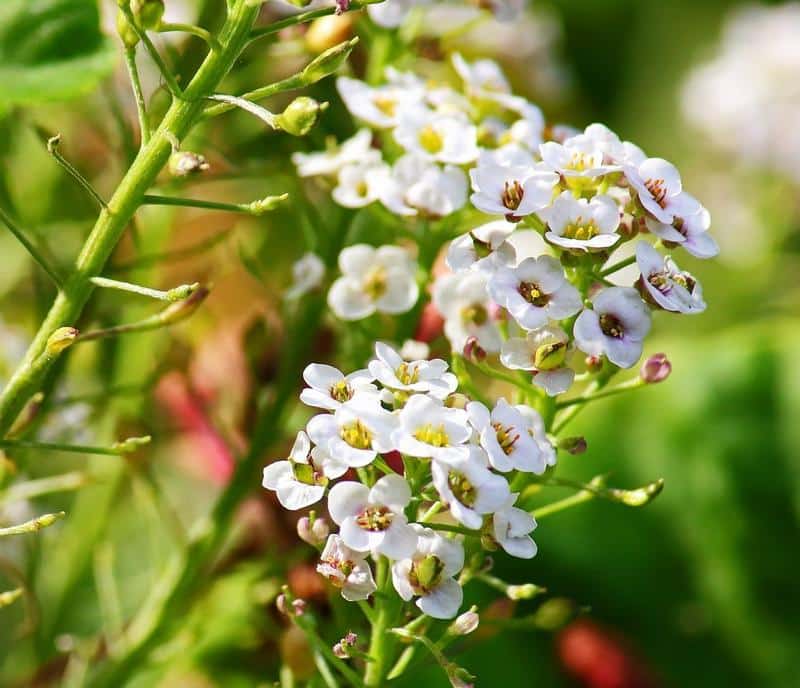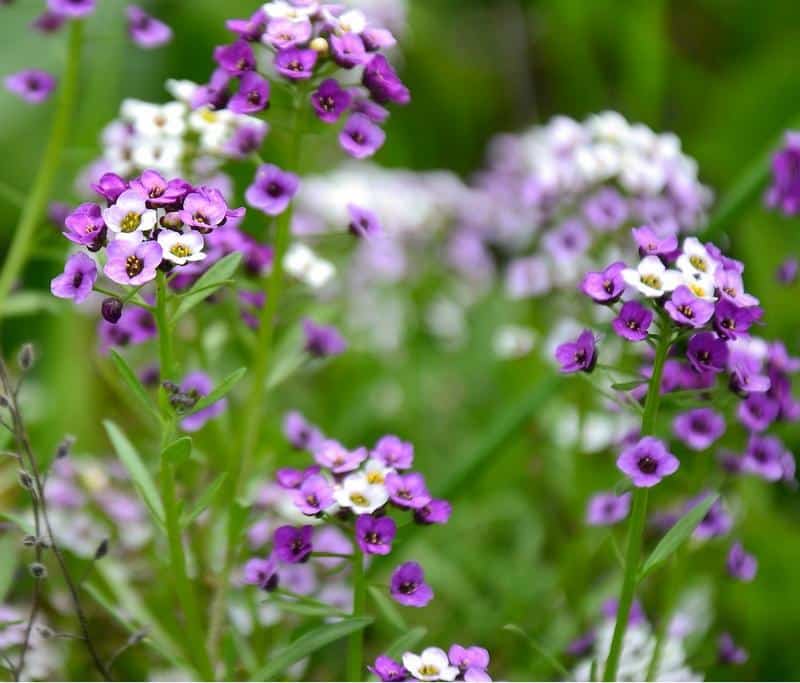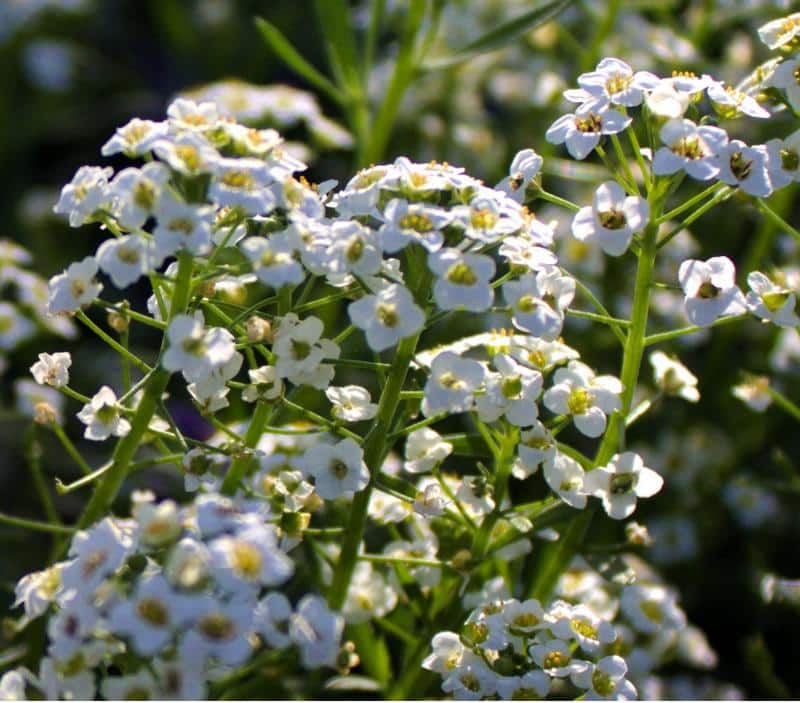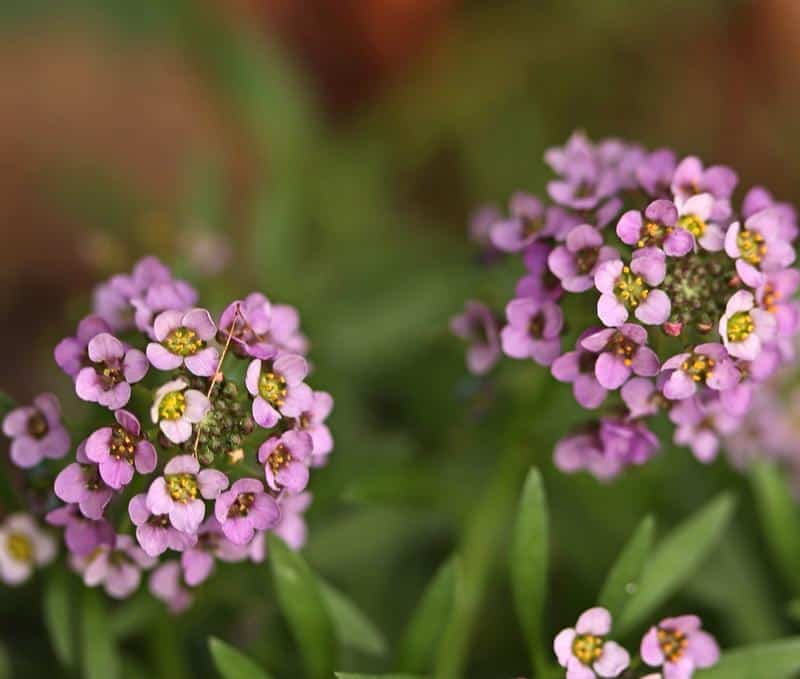Is Alyssum Poisonous to Dogs? Is Alyssum Toxic to Dogs?
Is alyssum poisonous to dogs? Is alyssum toxic to dogs? In this article, we’ll teach you all you need to know about these subjects including what to do if your dog ate alyssum already. We’ll then teach you the two commands that will make sure your dog always stays safe around alyssum in the future.
Next, we’re going to fill out your knowledge on alyssum and dogs by telling you how to keep dogs away from alyssum (and other possibly poisonous plants). Finally, we’ll finish all of this up by instructing you on how to grow alyssum when you have dogs in the home. Keep reading!
Is Alyssum Poisonous to Dogs?

Alyssum is not poisonous to dogs. This delightful flowering plant is a safe option for dog-friendly gardens. However, as a general rule, it’s best to discourage dogs from eating any type of plant material, including alyssum, as it can cause mild gastrointestinal upset.
Is Alyssum Toxic to Dogs?
Alyssum is not toxic to dogs. According to the ASPCA and other pet health organizations, alyssum is not listed as a toxic plant. While this plant is safe, any plant material can lead to minor gastrointestinal upset in dogs if consumed in large quantities.
Symptoms could include mild vomiting or diarrhea, which usually resolves on its own without significant intervention.
Training “Leave It” Command
Despite alyssum not being toxic to dogs, it’s still a good idea to train them on the “Leave It” command to discourage your dog from eating plants in general. This command helps keep them safe around alyssum and other plants by teaching them to avoid certain items.
- Hold a treat in a closed fist.
- Say “leave it.”
- Wait until your dog stops trying to get the treat.
- Reward them with a different treat from your other hand.
Consistent practice can teach your dog that “leave it” applies to all items you don’t want them to have, not just treats.
Training “Drop It” Command
The “Drop It” command can also be beneficial in keeping your dog safe around alyssum and other non-toxic plants.
- Begin a game of tug with a toy.
- Say “drop it” while stopping the play.
- When your dog releases the toy, reward them with a treat.
This command ensures that if your dog picks up something you don’t want them to have, like a mouthful of alyssum or any other plant, they understand the command to let it go.
Alyssum is not toxic to dogs, but it’s always best to prevent your dog from eating any plant material. These two commands will do that, but it’s important to remember that the underlying behavioral issues (curiosity, anxiety, boredom, etc.) that were causing all of this to begin with will still be present.
And until you address those, any positive changes you see are only going to be temporary.
“Well, how do I make these changes last?”
By getting your dog to truly choose to follow your direction, that’s how. I tried many times to write out how you can do that before deciding it made more sense to just link you to the free video series that explains it better than I’d ever be able to.
The series is by a man named Dan who is one of the world’s leading dog obedience trainers. In it, he teaches you how to put an end to things like your dog eating alyssum and all other misbehavior using his fast and easy-to-follow methods.
In the first video, Dan will reveal to you why the two most common methods of dog training only doom you to failure. You can watch the video now by clicking here. Follow the proven system he’ll show you in his series and you’ll never have to spend another second worrying about your dog eating alyssum ever again!
What to Do if Dog Eats Alyssum

If your dog eats alyssum, there’s generally no cause for alarm. Alyssum is not toxic to dogs, but it may still cause a mild gastrointestinal upset. If your pet shows severe signs of distress or symptoms persist, it’s always a good idea to contact your vet.
My Dog Ate Alyssum, What Do I Do?
If your dog ate alyssum, remain calm. Alyssum is not known to be toxic to dogs, so it’s unlikely to cause anything more than mild digestive discomfort. However, monitor your dog closely for any unusual behavior or symptoms such as vomiting, diarrhea, or loss of appetite.
If these symptoms persist, or if your dog appears to be in pain or distress, seek veterinary attention immediately.
Dog Eating Alyssum
While alyssum is not toxic to dogs, it still should not be a part of their diet and it’s best to discourage your dog from eating it. Mild gastrointestinal upset may occur, and while not dangerous, it can cause discomfort to your pet.
Keeping an eye on your dog while they’re in the garden and training them to avoid eating plants can help prevent these issues. Learn the commands you’ll need in the first section.
Preventive Measures
To ensure that your dog doesn’t eat alyssum or any other garden plants, some preventive measures could be implemented:
- Supervision: Monitor your dog when they are outside and steer them away from the garden areas with plants.
- Enclosures: Use pet-friendly enclosures or fencing to keep your dog out of specific areas of the garden where they might be tempted to eat plants.
- Safe Toys: Provide plenty of safe, engaging toys for your dog to chew on instead of resorting to plants.
Pet-Friendly Gardening
For the ultimate in safety, consider creating a pet-friendly garden. This could include a designated area for your dog to play and explore safely, away from any plants. Use non-toxic plants and ensure any potentially toxic plants are securely fenced off or removed entirely.
In conclusion, while alyssum is not toxic to dogs, it’s best to avoid letting your dog eat it or any other plant material. Implement preventive measures and consider creating a pet-friendly garden. If your dog does eat alyssum and shows prolonged signs of discomfort or distress, contact your vet for guidance.
Learn to keep your dogs away from plants by going back to the first section.
It would be a very good idea to fix this issue with your pup now, as doing so will also keep them safe around other plants which may be harmful. You then won’t have to think about things like are SunPatiens poisonous to dogs, are New Guinea Impatiens poisonous to dogs, are Impatiens poisonous to dogs, or are geraniums safe for dogs.
Alyssum and Dogs

Alyssum is not toxic to dogs if ingested. However, it’s always recommended to discourage dogs from eating any kind of plants, including alyssum, as it might cause a mild stomach upset. It’s important to implement measures that ensure your dog’s safety and prevent them from eating plants in your garden.
How to Keep Dogs Away From Alyssum
Despite alyssum not being toxic to dogs, you’ll still want to prevent them from eating it to avoid possible digestive discomfort. You can do this by installing pet-friendly fences or barriers around your alyssum plants or garden areas.
Alternatively, you could supervise your dog when they’re outdoors to ensure they’re not consuming any plants.
Creating a Dog-Safe Garden
Creating a garden that’s safe for your dog involves more than just choosing non-toxic plants. Consider adding a designated area for your dog to play and explore, away from the plants. This space could be filled with dog-friendly features like toys, digging spots, and shade for hot days.
Teaching Dogs Plant Boundaries
Training your dog to understand boundaries can be an effective measure to keep them away from your alyssum or other plants. By using commands such as “leave it” or “drop it,” you can teach your dog to stay away from certain areas or items, including your garden plants. Learn both in the first section.
In conclusion, while alyssum is not considered toxic to dogs, preventing them from eating it or any other plants is always the safest course of action. Strategies like installing barriers, creating a dog-safe garden, and teaching plant boundaries can be effective ways to keep your dog safe and ensure they enjoy the outdoors without risk.
Always observe your dog for any signs of discomfort after they’ve been outside, and consult your vet if you notice anything unusual.
How to Grow Alyssum

Growing alyssum involves simple steps: selecting a sunny to partly shaded site with well-drained soil, sowing the seeds or planting seedlings, watering moderately, and occasionally feeding with a balanced fertilizer.
This low-growing, fragrant plant, known for its clusters of small flowers, is quite easy to cultivate, making it an excellent choice for garden edges, containers, or as ground cover.
- Selecting a Site: Alyssum prefers full sun to partial shade and well-drained soil. It thrives in a variety of soil types, including sandy, loamy, and clay soils, as long as they are well-draining. Although it can tolerate poor soil, alyssum performs best in moderately fertile ground.
- Planting: You can start alyssum from seeds or nursery-grown plants. If sowing seeds, scatter them over the planting area and lightly cover with soil. For seedlings, plant them at the same depth they were growing in their nursery pots. Space plants about 6 to 9 inches apart to allow for their spreading growth.
- Watering: Alyssum prefers moderately moist soil. Water regularly, especially in dry conditions, but avoid overwatering as this can lead to root rot. Alyssum is somewhat drought-tolerant once established, but consistent moisture will yield the best results.
- Feeding: Although alyssum is not a heavy feeder, applying a balanced, slow-release fertilizer at the time of planting can help encourage abundant flowering. If your soil is particularly poor, you may also want to provide an additional feeding in mid-summer.
With its dense clusters of small, fragrant flowers, alyssum adds a splash of color and a sweet scent to any garden. It’s an easy-to-grow plant that can provide ground cover, edge a garden bed, or fill out a container garden, adding a charming touch wherever it’s planted.
Learn to control your dogs around alyssum and other plants by going back to the first section now.
I’m sure you’re looking forward to getting this done with so that your alyssum and dogs can grow together, so I’ll let you get started now. Good luck, and thanks for reading our article “Is Alyssum Poisonous to Dogs? Is Alyssum Toxic to Dogs?”





